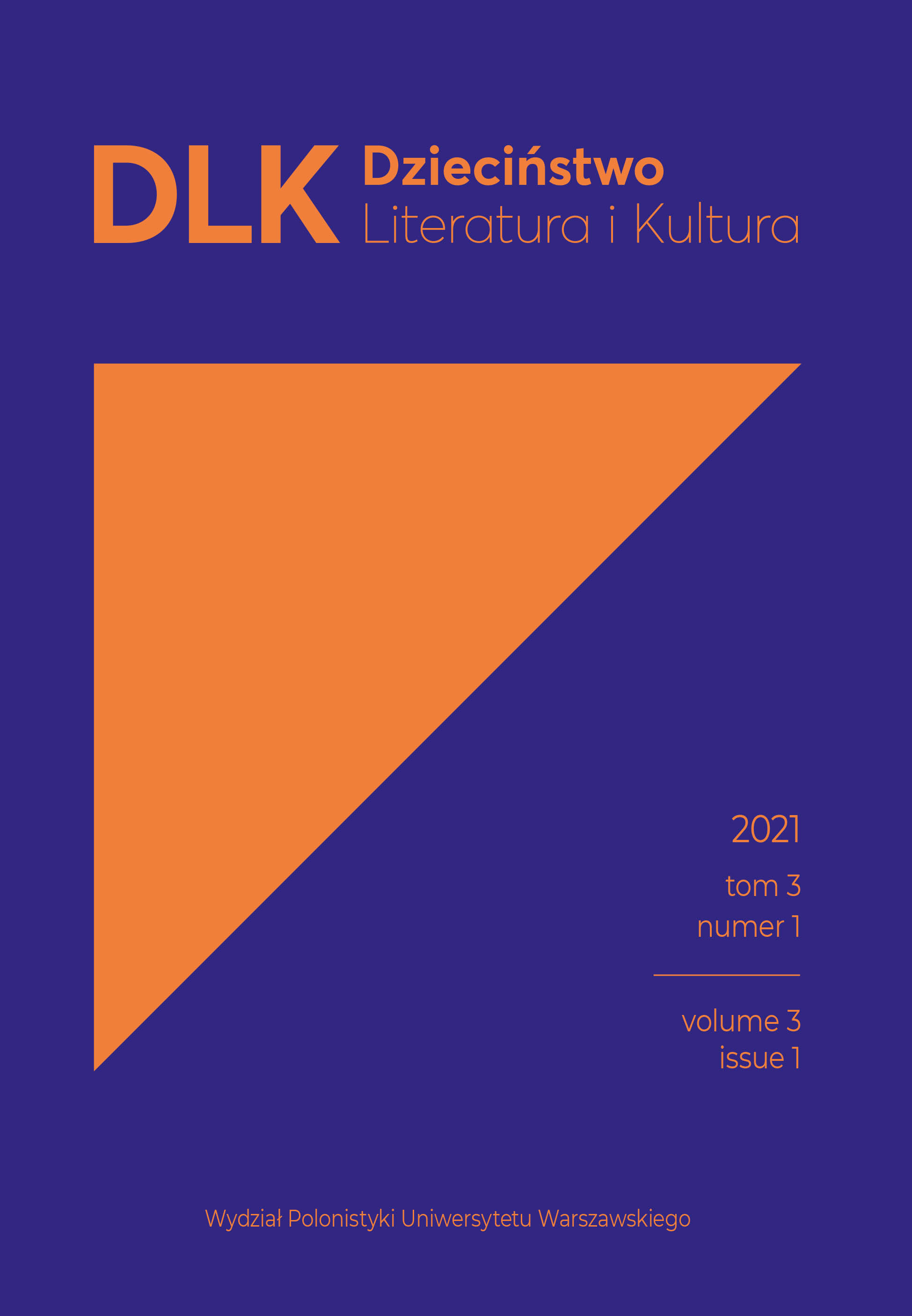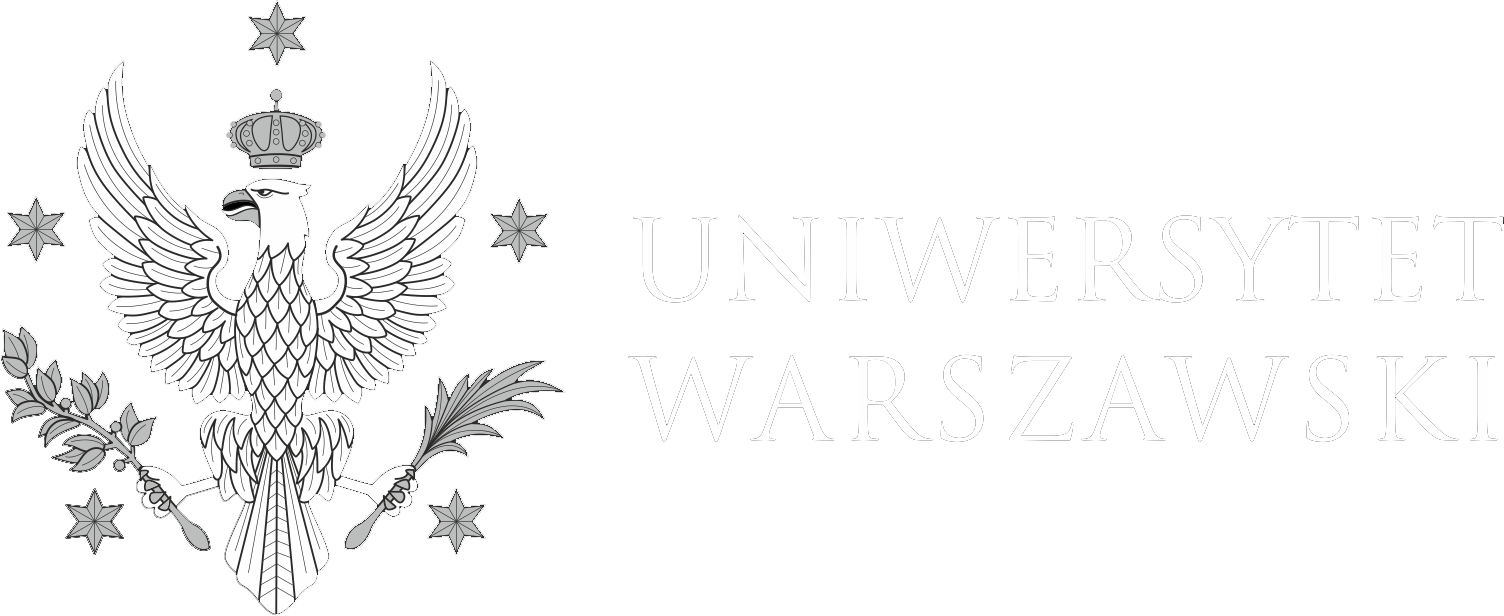Krytyczna analiza splecionych ideologii w amerykańskich książkach obrazkowych o tajwańskich dzieciach
Abstrakt
Jako że światopogląd dziecka kształtowany jest przez książki, ideologie zawarte w lekturach wpływają na wartości i przekonania młodych czytelników. Na amerykańskim rynku książki głównego nurtu istnieje bardzo niewiele reprezentacji tajwańskich bohaterów i ich kultury. Celem niniejszego opracowania jest zatem zbadanie portretu tajwańskich dzieci i tajwańskiej kultury w pięciu książkach obrazkowych wydanych w USA: I Dream of Popo [Śnię o Popo] Livii Blackburne (2021), Maggie’s Chopsticks [Pałeczki Maggie] Alana Woo (2015), Hannah is My Name [Mam na imię Hannah] Belle Yang (2008), The Ugly Vegetables [Brzydkie warzywa] Grace Lin (1999) oraz Typhoon Holidays [Wakacje pod tajfunem] Yi Ling Hsu (2015). Aby dogłębnie przeanalizować tekstowe i pozatekstowe treści tych książek obrazkowych, w tekście zastosowano teoretyczne ramy ideologii i orientalizmu, wyszczególnione w takich schematach jak postacie, relacje, interakcje, konflikty i rozwiązania problemów w tych opowieściach. Według autorek niniejszego studium splecione ideologie ról płciowych, kapitalizmu i patriarchatu pośrednio sprawują władzę nad młodymi bohaterami analizowanych dzieł. Co więcej, dziecięce postaci są traktowane przez dorosłych pojawiających się w książkach i przez dominującą kulturę zachodnią jako „posłuszni inni”.
Zgłoszono: 30.12.2021
Zaakceptowano: 01.08.2022
Słowa kluczowe
literatura dziecięca; ideologia; orientalizm; książki obrazkowe; tajwańskie dzieci; kultura tajwańska
Bibliografia
Barrett, M. (1980). Women’s oppression today: Problems in Marxist feminist analysis. Verso.
Bem, S. L. (1974). The measurement of psychological androgyny. Journal of Consulting and Clinical Psychology, 42(2), 155–162. https://doi.org/10.1037/h0036215.
Bishop, R. S. (1990). Mirrors, windows, and sliding glass doors. Perspectives: Choosing and Using Books for the Classroom, 6(3), ix–xi.
Blackburne, L. (2021). I dream of Popo (J. Kuo, Illus.). Roaring Brook Press.
Bradford, C. (2010). Race, ethnicity and colonialism. In D. Rudd (Ed.), The Routledge companion to children’s literature (pp. 39–50). Routledge.
Cai, M. (1994). Images of Chinese and Chinese Americans mirrored in picture books. Children’s Literature in Education, 25(3), 169–191. https://doi.org/10.1007/BF02355394.
Cai, M. (2002). Multicultural literature for children and young adults: Reflections on critical issues. Greenwood Press.
Chen, M., & Wang, Q. (2014). China and Chinese as mirrored in multicultural youth literature: A study of award-winning picture books from 1993 to 2009. In: X. Chen,
Q. Wang, & Y. Luo (Eds.), Reading development and difficulties in monolingual and bilingual Chinese children (pp. 231–252). https://doi.org/10.1007/978-94-007-7380-6_12.
Chinn, K. (1995). Sam and the lucky money (C. Van Wright & Y.-H. Hu, IIlus.). Lee & Low Books.
Cooperative Children’s Book Center. (2019). Data on books by and about Black, Indigenous and People of Color published for children and teens compiled. School of Education, University of Wisconsin-Madison. Retrieved October 7, 2022, from https://ccbc.education.wisc.edu/literature-resources/ccbc-diversity-statistics/books-byabout-poc-fnn/.
Dewi, Y. R. (2019). The patriarchy system in children literature (a study of Hans Christian Andersen’s literary works). Doctoral dissertation, Universitas Pasundan Bandung, Indonesia. Retrieved October 7, 2022, from http://repository.unpas.ac.id/46191/.
Gates, P. S., & Mark, D. L. H., (2006). Cultural journeys: Multicultural literature for children and young adults. The Scarecrow Press.
Gou, L., & Son, E. H. (2021). Chinese children’s school experiences represented in picture books. Research on Diversity in Youth Literature, 4(1), 5.
Hsieh, I. H. (2018). Confucian principles: A study of Chinese Americans’ interpersonal relationships in selected children’s picturebooks. Children’s Literature in Education, 49(2), 216–231. https://doi.org/10.1007/s10583-016-9289-z.
Hsieh, R. W. (2020, April 6). It’s time for children’s literature to talk about Taiwan. We Need Diverse Books. Retrieved October 7, 2022, from https://diversebooks.org/itstime-for-childrens-literature-to-talk-about-taiwan/.
Hsu, Y. L. (2015). Typhoon holidays (J. Kwag, Illus., J. Cowley, Ed.). Big & Small.
Huang, H.- L. (2019). Go beyond borders with picture books: A case study of a Taiwanese children’s book publisher. Publishing Research Quarterly, 35(1), 52–67. https://doi.org/10.1007/s12109-018-9618-8.
Huang, H.-L. (2020). Old trees as memory-keepers in Taiwanese children’s books: Nostalgia as a search for the meanings of change. Children’s Literature in Education, 51(2), 207–227. https://doi.org/10.1007/s10583-018-9370-x.
Hui, Z. (2020). An overview of studies in Dragonwings. Frontiers of Educational Research, 10, 49–53. https://doi.org/10.25236/FER.2020.031011/.
Idriss, M. M. (2021). Abused by the patriarchy: Male victims, masculinity, ‘honor’-based abuse and forced marriages. Journal of Interpersonal Violence, 37(13–14), NP11905–NP11932. https://doi.org/10.1177/0886260521997928.
Ishizuka, K., & Stephens, R. (2019). The cat is out of the bag: Orientalism, anti-Blackness, and White supremacy in Dr. Seuss’s children’s books. Research on Diversity in Youth Literature, 1(2), 4.
Ke, X. (2015). Person-making and citizen-making in Confucianism and their implications on contemporary moral education in China. In G. Zhao & Z. Deng (Eds.), Re-envisioning Chinese education: The meaning of person-making in a new age (pp. 116–129). Routledge.
Keller, T., & Franzak, J. K. (2016). When names and schools collide: Critically analyzing depictions of culturally and linguistically diverse children negotiating their names in picture books. Children’s Literature in Education, 47(2), 177–190. https://doi.org/10.1007/s10583-015-9260-4.
Keyes, M. T., & McGillicuddy, Á. (2014). Introduction: Politics and ideology in children’s literature. In M. T. Keyes & Á McGillicuddy (Eds.), Politics and ideology in children’s literature (pp. 9–19). Four Courts. Lesnik-Oberstein, K. (1994). Children’s literature: Criticism and the fictional child. Clarendon.
Leu, S.-J. (2001). Struggles to become ‘Americans’: Historical and contemporary experiences of Asian Pacific American immigrants in children’s and young adult fiction, 1945–1999. Doctoral dissertation, University of Illinois at Urbana-Champaign, USA. Retrieved October 7, 2022, from https://www.proquest.com/openview/1d66113f3ea6d1c1fa0b81b848038324/1?pq-origsite=gscholar&cbl=18750&diss=y.
Lin, G. (1999). The ugly vegetables (G. Lin, Illus.; anniversary ed.). Charlesbridge. McCallum, R., & Stephens, J. (2011). Ideology and children’s books. In S. Wolf, K. Coats, P. A. Enciso, & C. A. Jenkins (Eds.), Handbook of research on children’s and young adult literature (pp. 359–371). Routledge.
McDevitt, R. (2007). Confucianism: Understanding and applying the Analects of Confucius. Education About Asia. 12(1), 46–47.
Migliaccio, T. A. (2001). Marginalizing the battered male. Journal of Men’s Studies, 9(2), 205–226. https://doi.org/10.3149/jms.0902.205.
Millett, K. (1969). Sexual politics. Avon.
Nieuwenhuys, O. (2013). Theorizing childhood(s): Why we need postcolonial perspectives. Childhood, 20(1), 3–8. https://doi.org/10.1177/0907568212465534.
Nodelman, P. (1992). The other: Orientalism, colonialism, and children’s literature. Children’s Literature Association Quarterly, 17(1), 29–35. https://doi.org/10.1353/chq.0.1006.
Nodelman, P. (2008). The hidden adult: Defining children’s literature. Johns Hopkins University Press.
Palo, A., & Manderstedt, L. (2019). Beyond the characters and the reader? Digital discussions on intersectionality in The Murderer’s Ape. Children’s Literature in Education, 50(2), 125–141. https://doi.org/10.1007/s10583-017-9338-2.
Ridgeway, C. L. (1997). Interaction and the conservation of gender inequality: Considering employment. American Sociological Review, 62(2), 218–235. https://doi.org/10.2307/2657301.
Rose, J. (1984). The case of Peter Pan, or the impossibility of children’s fiction. Macmillan.
Sahn, S. F. (2016). Decolonizing childhood: Coming of age in Tamora Pierce’s fantastic empire. Children’s Literature, 44(1), 147–171. https://doi.org/10.1353/chl.2016.0012.
Said, E. W. (1978). Orientalism. Penguin.
Said, E. W. (1994). Orientalism (25th anniversary ed., with a new preface by the author). Vintage Books.
Somech, A., & Drach-Zahavy, A. (2016). Gender role ideology. In A. Wong, M. Wickramasinghe, R. C. Hoogland, & N. A. Naples (Eds.), The Wiley Blackwell encyclopedia of gender and sexuality studies (Vol. 1–3). John Wiley & Sons. https://doi.org/10.1002/9781118663219.wbegss205.
Son, E. H., & Sung, Y. K. (2013). Beyond sari, Hindu monkey god, and Divali: A critical analysis of South Asian cultures and childhood represented in picture books. In J. C. Naidoo & S. P. Dahlen (Eds.), Diversity in youth literature: Opening doors through reading (pp. 71–82). American Library Association.
Stephens, J. (1992). Language and ideology in children’s fiction. Longman.
Tagwirei, C. (2013). Fictions, nation-building and ideologies of belonging in children’s literature: An analysis of Tunzi the Faithful Shadow. Children’s Literature in Education, 44(1), 44–56. http://dx.doi.org/10.1007%2Fs10583-012-9178-z.
Wang, C. Y. (2020). Disappearing fairies and ghosts: Female and child characters as others in Chinese contemporary children’s fantasy. Children’s Literature in Education, 51(4), 433–450. https://doi.org/10.1007/s10583-019-09391-8.
Welter, B. (1966). The cult of true womanhood: 1820–1860. American Quarterly, 18(2), 151–174.
Woo, A. (2015). Maggie’s chopsticks (I. Malenfant, Illus.) Kids Can Press.
Yang, B. (2008). Hannah is my name (B. Yang, Illus.). Candlewick Press.
Yi, J. H. (2014). “My heart beats in two places”: Immigration stories in Korean-American picture books. Children’s Literature in Education, 45(2), 129–144. https://doi.org/10.1007/s10583-013-9209-4.
Zhang, J., Norvilitis, J. M., & Jin, S. (2001). Measuring gender orientation with the Bem Sex Role Inventory in Chinese culture. Sex Roles, 44(3), 237–251. http://dx.doi.org/10.1023/A:1010911305338.
Uniwersytet Boise State Stany Zjednoczone
https://orcid.org/0000-0002-5856-6117
HsingJung Chen – doktorantka w programie nauczania i instruktażu na Uniwersytecie Boise State (USA). Jej zainteresowania naukowe obejmują krytyczne umiejętność krytycznego czytania i pisania z naciskiem na wzmocnienie niedostatecznie reprezentowanych grup kulturowych w celu promowania literatury wielokulturowej. Kontakt: hsingjungchen@u.boi
Uniwersytet Boise State Stany Zjednoczone
https://orcid.org/0000-0002-2115-686X
Eun Hye Son – dr, profesor nadzwyczajny w Zakładzie Alfabetyzacji, Języka i Kultury na Uniwersytecie Boise State (Stany Zjednoczone). Jej zainteresowania badawcze obejmują krytyczną analizę wielokulturowej literatury dziecięcej i wykorzystanie jej do kształtowania umiejętności czytania i pisania. Kontakt: eunhyeson@boisestate.edu.

Utwór dostępny jest na licencji Creative Commons Uznanie autorstwa 4.0 Międzynarodowe.
Polityka Open Access
Wszystkie artykuły prezentowane na łamach „Dzieciństwa. Literatury i Kultury” są publikowane w otwartym dostępie na licencji Creative Commons – Uznanie autorstwa 4.0 Międzynarodowe (CC BY 4.0). Oznacza to, że:
- mogą być udostępniane i cytowane pod warunkiem jednoznacznego i klarownego wskazania autora/autorki/autorów/autorek przywoływanego tekstu;
- nie można korzystać ze środków prawnych lub technologicznych, które ograniczałyby innych w wykorzystywaniu tekstu na warunkach określonych w licencji.
Więcej informacji: https://creativecommons.org/licenses/by/4.0/legalcode.pl





